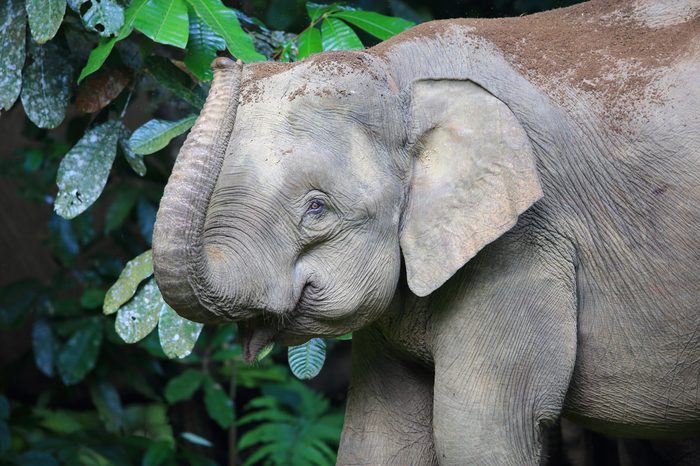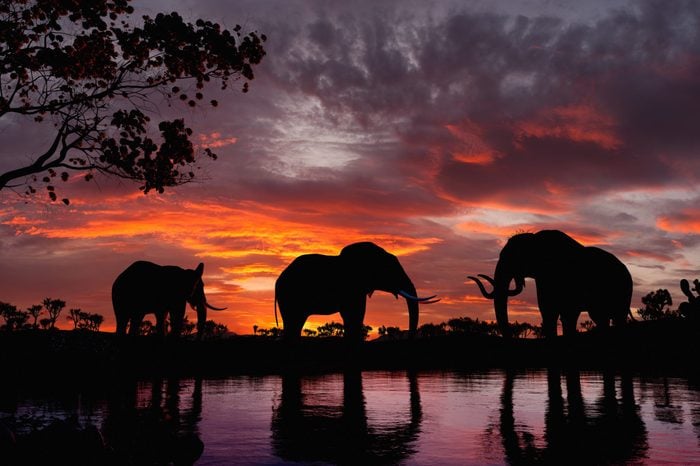
There are now two subspecies of African elephants
Thanks to advancements in DNA studies, scientists recently revised their thinking on the number of elephant species remaining; they used to think there were just two—Asian and African elephants. But scientists now differentiate between the African bush elephant (also called the African savanna elephant) and the African forest elephant. The forest elephant lives in dense forests in equatorial countries like Uganda. The International Union for the Conservation of Nature (IUCN) classifies African elephants as vulnerable and Asian elephants as endangered. The African Wildlife Foundation doesn’t have a population count for the elusive and endangered African forest elephant, but it is thought to be small. This is how many elephants are left in the world, compared to just 100 years ago.
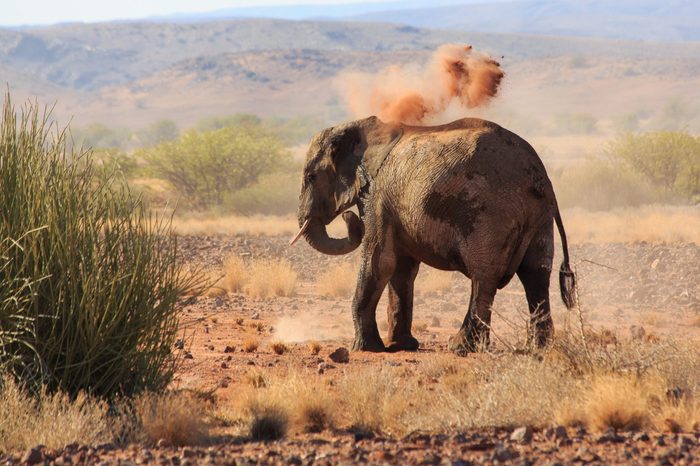
Where to see wild African elephants
Given the increasing populations of African bush/savanna elephants in several countries, it’s no surprise that they’re the easiest species to see in the wild. The African countries with the largest number of elephants are Botswana, Zimbabwe, and Tanzania. A safari is an ideal way to see elephants roaming the African savanna just as they have for thousands of years. South Africa’s game reserves also have healthy populations of elephants and the rare desert elephant (shown) can sometimes be spotted near Namibia’s Skeleton Coast.
However, you’re unlikely to ever see the small African forest elephant, even if you’re deep within their habitats, including during a mountain gorilla trek in Rwanda or Uganda, as these elusive elephants stay away from humans; in fact, scientists know very little about them.
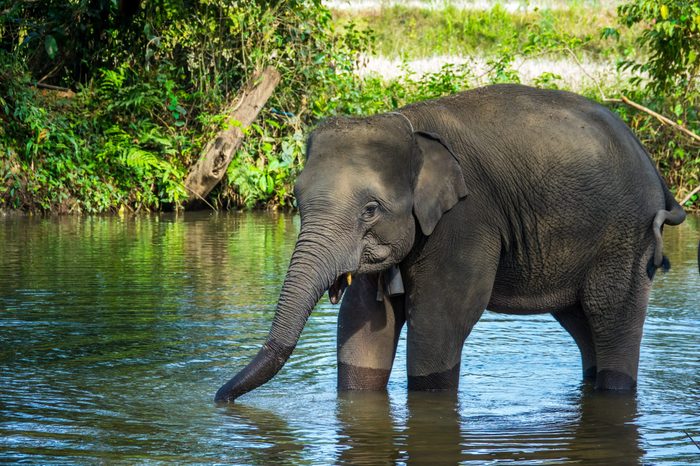
Where to see Asian elephants
While it is easier to see elephants in captivity India and Asia than in Africa, that’s not always a good thing. There are many places throughout Asia where tourists can ride, bathe, feed, or watch elephants perform, but there’s a growing awareness that elephants deserve to live as natural a life as possible. For example, Cambodia plans to stop elephant rides at the Angkor Archeological Park by 2020.
Seeing Asian elephants in the wild—national parks and true sanctuaries—is possible, but tourists need to do their homework to make sure that they are visiting an ethical elephant sanctuary or park. Wildlife Friends Foundation Thailand (WFFT) is an excellent example. The group works with the Royal Forestry Department to rescue and rehabilitate wildlife, returning them to the wild where possible, and works to reverse deforestation to restore wildlife habitats. Tourists can visit to watch the elephants being elephants. Want to know more about the different types of elephants? These are 8 of the most endangered elephants in the world.
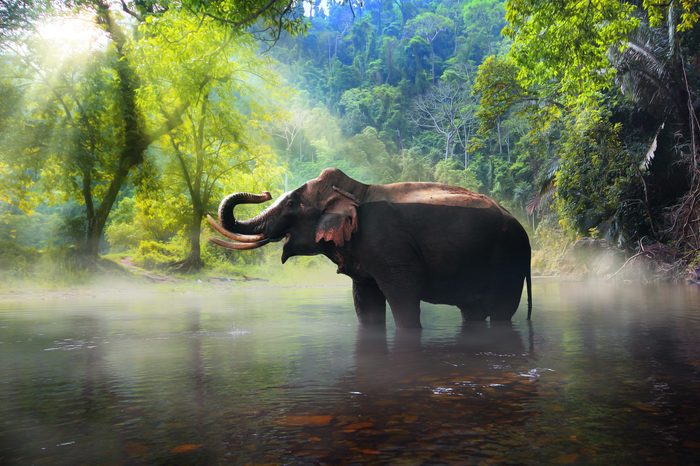
Thailand’s wild elephant population is increasing
Thailand has about 3,000 wild elephants that live in national parks and sanctuaries. There are a number of initiatives underway to protect the country’s elephants, including more active scrutinizing of camps and sanctuaries for signs of mistreatment.
While African elephants are poached for their ivory tusks, Asian elephants face an additional poaching problem: Baby elephants are often taken from the wild to be sold into the tourist industry. There, the young pachyderms are subjected to a cruel process called phajaan which “crushes their spirit” in an attempt to make them obey caregivers and be safe around humans. The Thai government is developing a counter-poaching database with the genetic information of every domesticated elephant. The database should thwart poachers’ ability to claim that babies taken from the wild (in any country) are the offspring of Thailand’s domesticated elephants.
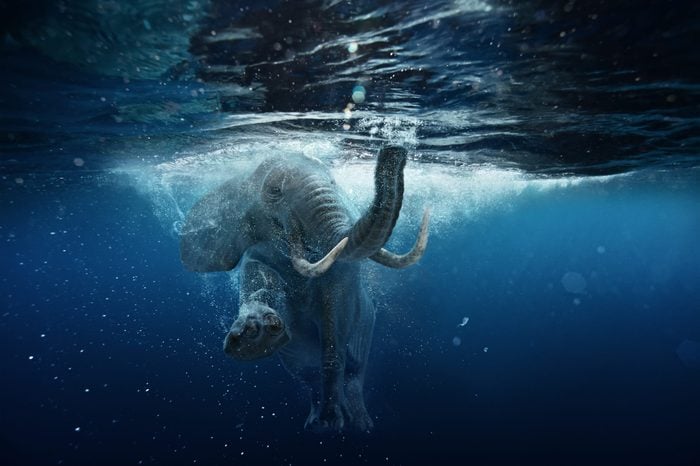
Elephants are made for the water
Whether in Africa or Asia, a water hole is an ideal place to see elephants, because elephants adore water. Not only do they need to drink it to stay alive (up to 50 gallons a day!), they use it to keep cool and enjoy playing in it.
It’s not a surprise given their evolutionary history; ancient elephants used to live part of the time in water much like a modern-day hippo. The discovery of the elephant’s cousin Moeritherium provides an evolutionary link between the elephant and the manatee. Moeritherium lived 37 million years ago in ancient Egypt, which was then a tropical rainforest.
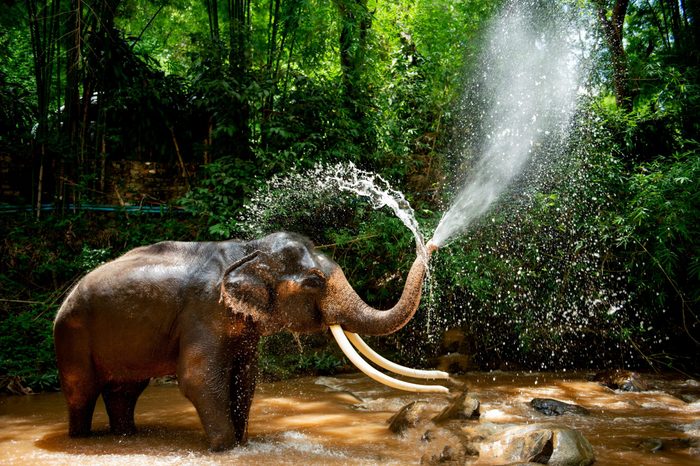
An elephant’s trunk has more muscles than the human body
Elephants use their trunks for almost all of their tasks: An elephant fills its trunk with water, like a hose, and then releases the liquid into its mouth to drink. The trunk acts as a snorkel so they can breathe when they swim in deep water. Elephants use their trunks to knock down trees, to eat, to caress the face of a baby elephant, and even to pick up a grain of rice. The World Wildlife Fund (WWF) says that an elephant’s trunk has 40,000 separate muscles. In comparison, humans have around 600 muscles in our whole bodies.
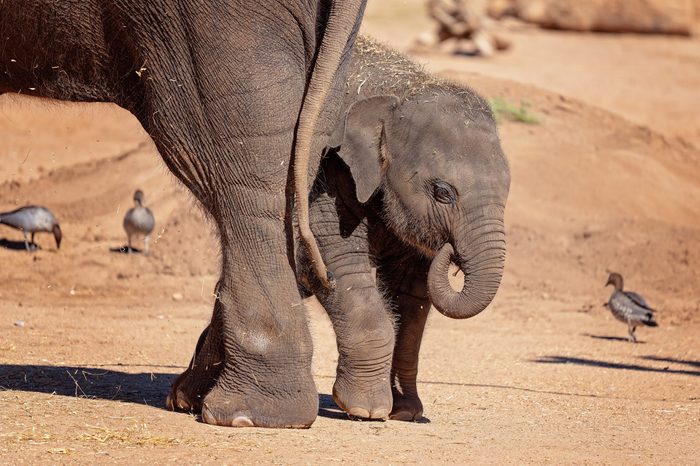
Elephants suck their trunks
Just as a human baby will suck its thumb, baby elephants suck their trunks. As with playing, it’s just another way they learn about their bodies and build muscles and dexterity. Sometimes older elephants have been seen sucking their trunks. While it might be a source of comfort, they’re more likely tasting something they’ve picked up with them.
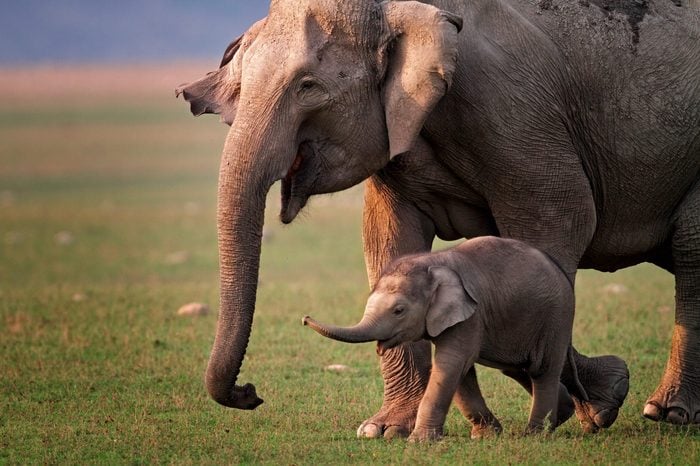
Baby elephants are babies for a long time
According to the WWF, elephants have the longest gestation period of any mammal. An African elephant is pregnant for 22 to 23 months, while an Asian elephant is pregnant for 18 to 22 months. It’s necessary for baby elephants to be able to stand almost as soon as they’re born. If they can’t, they’ll die because standing is the only way to reach their mother’s milk. Baby elephants need to drink three gallons of milk every day to survive and grow. Some baby elephants aren’t weaned from their mother’s milk until the age of ten.
This elephant looks like a baby even when grown
Borneo elephants are the smallest of all Asian elephants. Their characteristic look—smaller size, proportionally larger ears, round cheeks, big bellies, and long tails—make them look like cute babies even when they’re fully grown. They’re endangered, the WWF reports there are only 1,500 remaining.
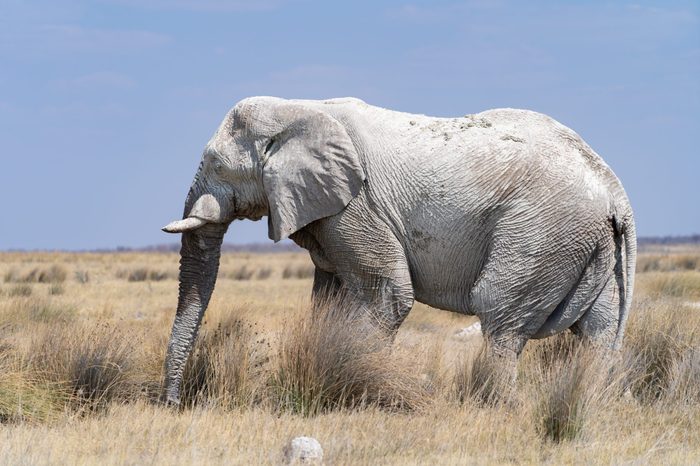
There are “ghost” elephants
Ghost elephants might look mysterious, but there’s a real-world explanation behind them. Ghost elephants are fairly common to see in Namibia, especially in Etosha National Park. In order to protect their skin from sunburn and from insects, elephants cover themselves in mud. When it dries, it turns a whitish-gray color, which kind of makes them look like gray ghosts.
When there’s no mud around, elephants will often spray themselves with water and then cover their skin with a trunk-full of white dust. The Namibia Tourism Board even reports the story of a green ghost elephant—a bull that covered itself with mud that looked green because of high algae content.
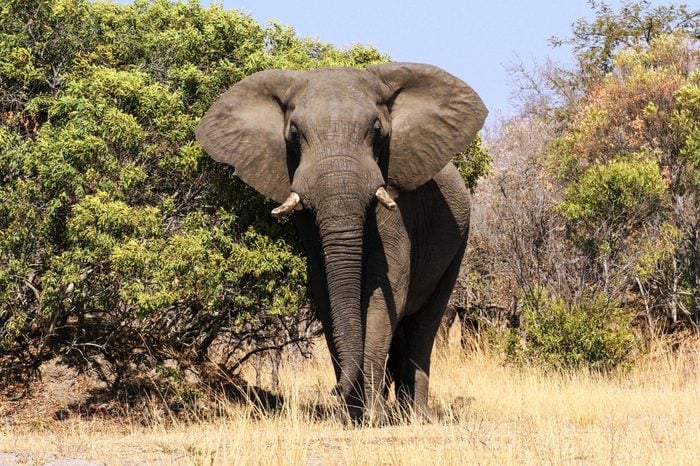
All the better to hear you with, my dear!
Elephants have large ears, but their ears are mainly used to help keep them cool by radiating heat away from the body. Of course, they use their ears for hearing too, but elephants also use their feet to hear low-frequency infrasonic sounds.
And what about the story that elephants are afraid of mice? There’s no evidence for that (in fact, elephants’ eyesight isn’t very good, so they might not even see a tiny mouse). There is evidence, though, that elephants dislike the scurrying sounds that mice make.
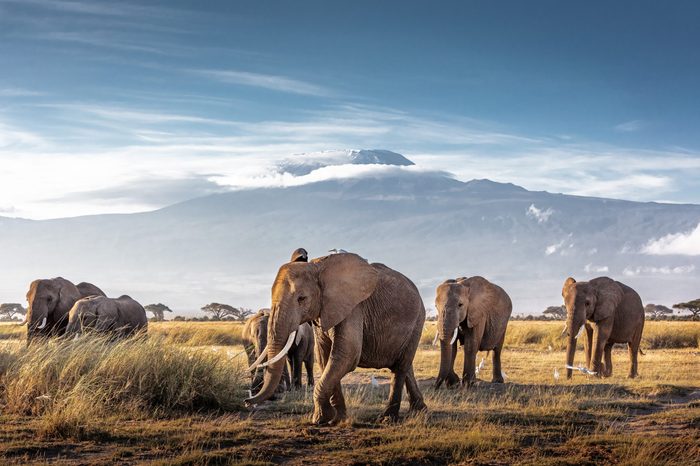
Elephants really are smart
Elephants are regarded as one of the most intelligent animals, and it’s not just the old adage that elephants never forget. How smart are elephants really? According to Scientific American, there are studies that show that elephants with their giant brains are as smart as chimpanzees, especially in the way they use tools.
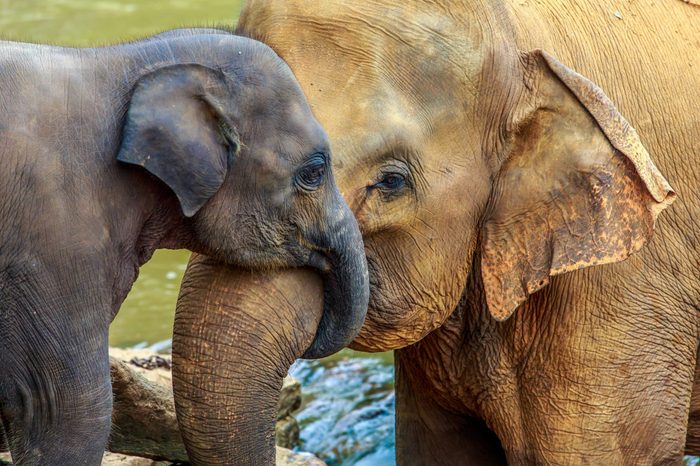
Elephants have emotions too
Elephants can communicate with each other and, as Amelia Meyer describes in Elephants Forever—A Study of Elephants, elephants experience emotions like joy, playfulness, compassion, and grief.
It seems elephants don’t only grieve for fellow elephants either. The elephants at Thula Thula, a safari lodge and game reserve near Durban, South Africa, grieved for a human. In her book, An Elephant in My Kitchen, Françoise Malby-Anthony describes the unusual behavior of elephants that her husband had saved years earlier. When he died, the herd unexpectedly arrived at Malby-Anthony’s game reserve home and stayed for a couple of days. They returned at exactly the same time three years in a row.
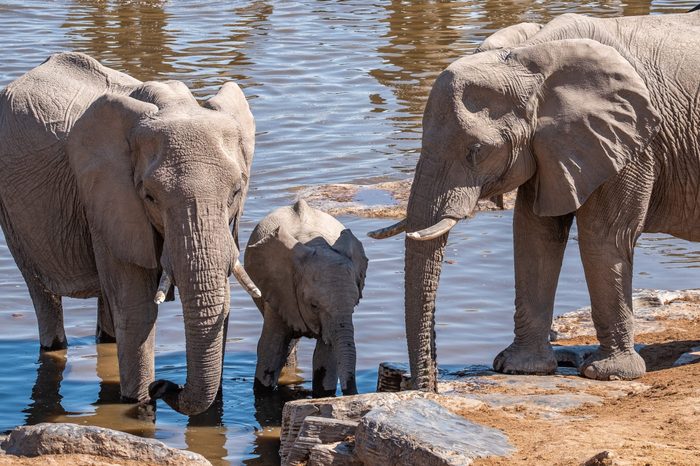
Families are really important to female elephants
Elephants live in matriarchal family groups. An older female leads a herd composed of her sisters, nieces, daughters, granddaughters, and their young. The herd works together to teach the babies and they even share babysitting duties. On the other hand, when male elephants reach their teen years, they seek more independence. They leave their family group and either roam their territory alone or form small herds with two or three other males. Forming a tight-knit matriarchal group is one of the 14 amazing things elephants can do.

